#ayurveda
Text

Happiness Chemicals
#manjiriayuveda#happiness#happymonday#happinesschemicals#happinesschallenge#neurotransmitter#serotinin#dopamine#oxytocin#endorphins#selfcare#healthyhabits#ayurveda canada#holistic healing#holistichealth#holistic food#gut health#digestion#healthy lifestyle#ayurveda#holistic health#healthyfood#sarnia healthcare#toronto ayurveda
710 notes
·
View notes
Text


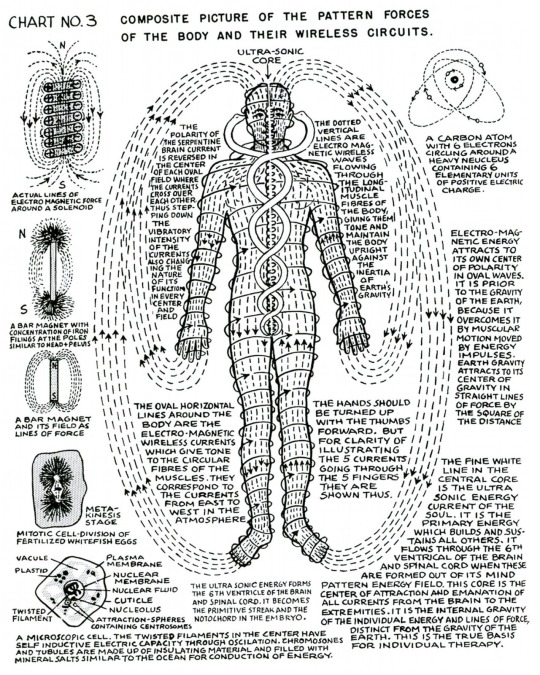
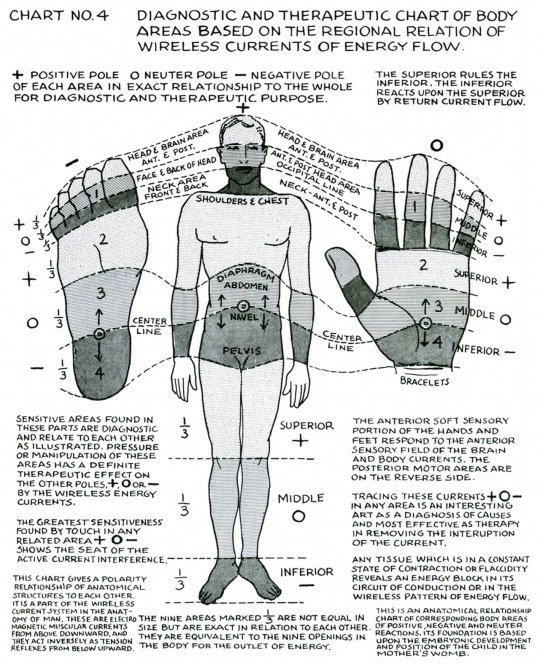

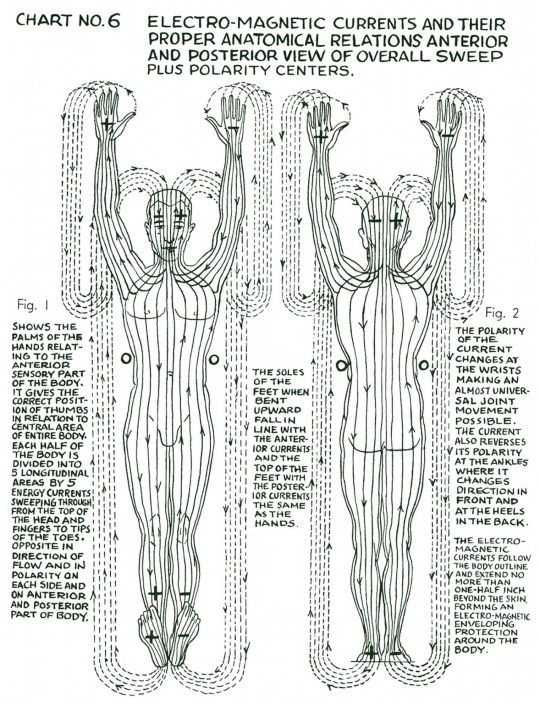



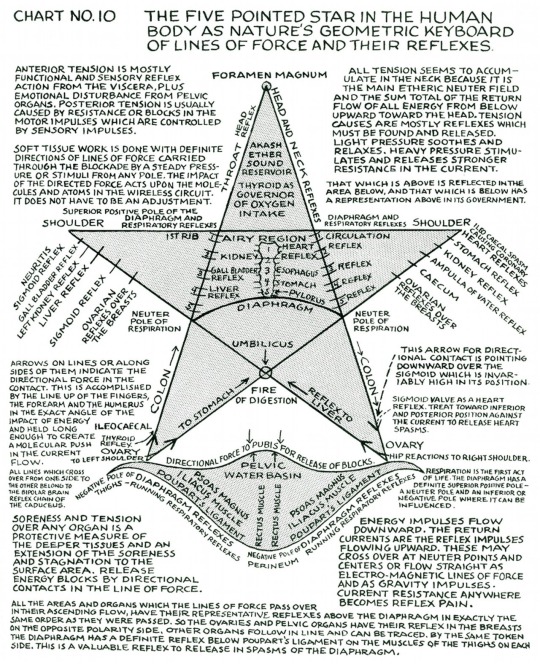
674 notes
·
View notes
Text
Ayurvedic Oils for Planetary Energy: Enhancing Wellness and Balance ✨🌿
In the ancient wisdom of Ayurveda, oils are not just nourishing elixirs for the body but also potent carriers of planetary vibrations, offering a holistic approach to wellness and balance.

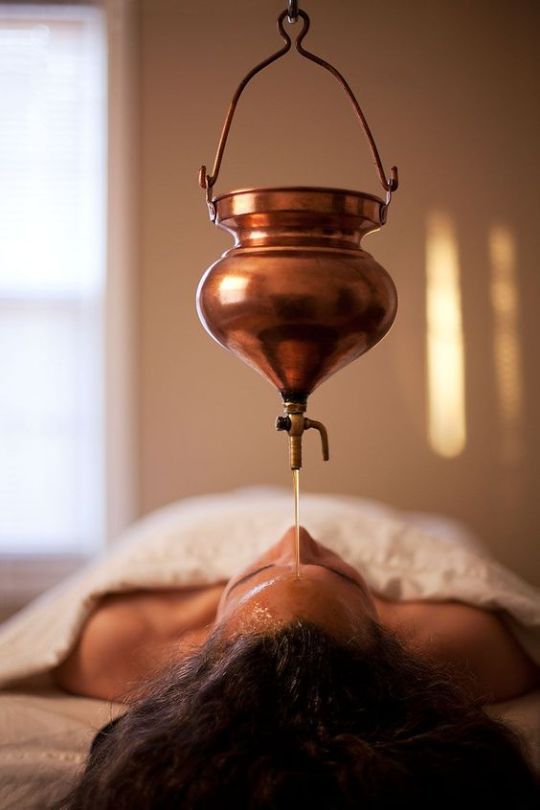
1/Sun Energy: Coconut Oil
Benefits: Harness vitality and strength with coconut oil. Its nourishing properties promote healthy skin, hair, and digestion, enhancing overall vitality and radiance.
How to Use: Incorporate coconut oil into daily cooking, skincare, and hair care routines for a boost of energy and vitality.
2/ Moon Energy: Almond Oil
Benefits: Embrace nurturing and soothing energy with almond oil. Its moisturizing qualities calm the mind and nourish the skin, promoting emotional well-being and tranquility.
How to Use: Massage almond oil onto the skin before bed or add a few drops to bathwater for a relaxing and rejuvenating experience.
3/ Mars Energy: Sesame Oil
Benefits: Channel fiery energy with sesame oil. Its warming properties stimulate circulation, boost immunity, and promote courage and strength.
How to Use: Use sesame oil for self-massage (abhyanga) or as a cooking oil to invigorate the body and mind.
4/ Mercury Energy: Jojoba Oil
Benefits: Embody communicative energy with jojoba oil. Its balancing properties support clear thinking, mental agility, and adaptability.
How to Use: Apply jojoba oil to the scalp and hair for hydration and balance, or use it as a carrier oil for essential oil blends to enhance focus and concentration.
5/ Jupiter Energy: Grapeseed Oil
Benefits: Align with expansive energy with grapeseed oil. Its light texture and antioxidant properties support growth, prosperity, and optimism.
How to Use: Use grapeseed oil as a moisturizer or massage oil to promote vitality and well-being, or add it to homemade skincare products for a radiant complexion.
6/ Venus Energy: Rosehip Seed Oil
Benefits: Embrace harmonious energy with rosehip seed oil. Its rejuvenating properties promote beauty, love, and creativity, nurturing inner and outer radiance.
How to Use: Apply rosehip seed oil to the face and body to reduce signs of aging and promote a glowing complexion, or use it as a natural alternative to moisturizers and serums.
7/ Saturn Energy: Castor Oil
Benefits: Embody disciplined energy with castor oil. Its detoxifying properties promote endurance, responsibility, and resilience.
How to Use: Use castor oil for oil pulling or as a massage oil to promote detoxification and grounding, or apply it to the scalp and hair for nourishment and strength.
8/ Rahu Energy: Neem Oil
Benefits: Harness transformative energy with neem oil. Its purifying properties help release toxins and negative patterns, promoting clarity and spiritual growth.
How to Use: Use neem oil as a natural remedy for acne or fungal infections, or incorporate it into skincare products for its antibacterial and antifungal properties.
9/ Ketu Energy: Frankincense Oil
Benefits: Embrace mystical energy with frankincense oil. Its grounding properties support meditation and introspection, promoting spiritual insight and inner peace.
How to Use: Diffuse frankincense oil during meditation or add it to skincare products for its rejuvenating and calming effects, promoting overall well-being and spiritual growth.
Incorporate these Ayurvedic oils into daily life to align with planetary energy, enhance well-being, and promote balance and harmony. 🪔🌿
62 notes
·
View notes
Text
Herbalism in Times of Turmoil
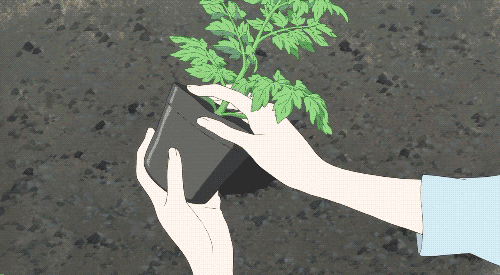
I've recently returned to my roots (pun intended) in folk herbalism to supplement the work I'm doing with my therapist. It wasn't an intentional thing -- in our current round of EMDR, we've uncovered some deeply buried trauma, and bringing that trauma to the surface has shaken the foundations of how I see myself and the world around me. I feel very raw and vulnerable. I feel disoriented and fragile.
I find myself drawn to plant medicine as I navigate this trauma with the help of my therapist. I think a part of me longs for the sympathetic magic of plants -- by taking them into my body, maybe I, too, can become firmly rooted, supported by the earth and nourished by the sun. Maybe I can relearn the magics of stillness and connection. Maybe I can reintegrate into the earth's cycles of death and rebirth.
Some of the plants I'm partnering with in this work are old friends. Others are new allies, recommended by professional herbalists for the type of trauma I'm processing. All of them are supportive in different ways, and all of them have important lessons.
Obviously, I am working with herbs as a compliment to the work I'm doing with a professional mental health counselor, not as a replacement for medical/psychological care. I recommend you do the same, especially if dealing with complex trauma. Even if money is tight, you may be able to get free or low-cost counseling through local social services, nonprofits, university hospitals, etc.
How I Work with Herbs
As an animist, I see working with herbs both as physical medicine and as a working relationship with the spirit of the plant. I don't like to say that I "use" herbs, because that implies that they are just tools. When I say I "work with" an herb, what I mean is that I am partnering with that plant as a living, thinking being that has kindly chosen to support my healing process. I try to honor that relationship in every part of my herbalist craft.
One way I do this is by verbally thanking the plants that I consume as medicine. If I'm drinking a cup of linden tea, I'll say something like, "Thank you, linden, for aiding in my healing today."
I try to use herbal preparations that allow for a sensory experience to help me connect with the plant spirit(s). I don't like taking capsules full of powdered herbs, because that doesn't allow me to see, touch, smell, or taste the plant. I like teas because they allow for a much more intimate connection with the plant's spirit, and I use tinctures when I feel like I need more concentrated medicinal compounds.
I'm a witch who loves plants, but when I'm working with herbs internally, I do not choose them based on their magical or spiritual correspondences. When choosing herbs, I look for quality scientific studies that prove their medicinal benefits, but honestly a lot of plant medicine hasn't been sufficiently studied yet. Because of this, I also look at the way plants are viewed in traditional healing modalities like Western herbalism, Ayurveda, Traditional Chinese Medicine, etc.
While I don't pick them based on their magical properties, I do think studying how these plants are used in magical practices can add an extra layer to my work with them. This helps me to have a more nuanced, deep, and complex relationship with the plant's spirit.
And of course, I always research contraindications and drug interactions before using an herb. For example, I don't recommend Saint John's Wort to anyone taking any kind of pharmaceutical medication because it really messes with the way your body processes your meds. It's also important to research how herbs might interact with other herbs and supplements you're already taking -- that's also a type of drug interaction!
I also try to remember that when we're moving through grief or processing trauma, this changes the way herbs (and drugs, for that matter) affect our bodies. I highly recommend the book The Trauma-Informed Herbalist by Elizabeth Guthrie to learn more about this.
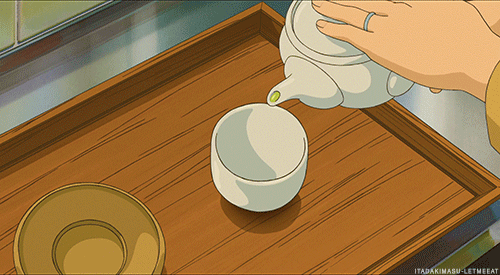
My Herbal Allies
These are the herbs I'm taking focusing my practice on right now:
Ashwagandha and Tulsi are two plant friends that I love pairing together. They're both adaptogens, meaning they can help manage the body's stress response, and come to Western herbalism by way of Ayurveda. I've been working with both of these plants for years, and although they do have different uses, I think they work really well together.
Ashwagandha is really helpful as a pick-me-up for the endocrine system (the system that produces hormones) and nervous system. I find that it has a very grounding effect and is especially helpful for when I feel overwhelmed or burned out. It's a great ally for building resilience when you feel like there's just way too much going on and have no idea how you're going to handle it all. It has a very bitter taste, so I usually add it to coffee or another very bitter beverage.
Tulsi, also called Holy Basil, is a lot more gentle and laid-back than ashwagandha, at least in my experience. It's one of my go-to herbs when I need emotional support. According to herbalists Katja Swift and Ryn Midura, "Tulsi has traditionally been the herb of choice for 'stuck emotions,' whether that's depression or PTSD or just a case of the grumpies." It has a delicious taste somewhere between basil and mint, and I love preparing it as a hot tea. This is one of my favorite herbs right now.
In Ayurveda, ashwagandha is classified as a Rasayana, which means it rejuvenates the body and can promote long life. It is also a Bhalya, meaning it promotes strength, and a Vajikara, which means it promotes healthy sexuality. Tulsi is one of the most valued herbs in Ayurveda and is even called the most sacred plant on earth in the Vedic Puranas. It increases sattva (light, clarity), uplifts the spirit, promotes joy and harmony, and increases prana (vital energy; similar to the concept of chi in China). They're sometimes used together because they're believed to support each other and enhance each other's effects.
I add ashwagandha and tulsi tinctures to my morning coffee and to other hot beverages throughout the day. I also really like tulsi as a tea, and tulsi tea is one of my go-to tools for replenishing my energy after a long day of tarot readings. That being said, I'm considering changing the way I consume these herbs to be more in line with traditional Ayurvedic practices, but I need to do more research first.
Cannabis is, honestly, one of my personal miracle workers, which is a little bit ironic because I also think it's waaaaay overhyped in the wellness industry right now. Cannabis is not a cure-all, and it is not recommended for everyone. There are several different types of cannabis, and each type has its own medicinal uses. For example, the cannabis I use in my personal practice is hemp, which is legally defined as cannabis with little to no THC, meaning it does not produce a high. Marijuana, the type of cannabis with THC, is powerful medicine for some people, but because of how my body and brain work, I personally don't use it. While marijuana use may be illegal depending on where you live, hemp is legal in most places.
I started working with cannabis several years ago to help manage anxiety and insomnia, but nowadays I mostly work with it to help with inflammation and chronic pain.
I find that my body really holds on to trauma in the form of tension, inflammation, and chronic pain. When my trauma response is triggered, I usually feel it as tension or pain, especially in my hips, pelvis, and lower back. I find cannabis really helpful for that stored trauma. It doesn't make the pain go away, but it helps me feel into it and navigate through it. I also find cannabis is really good at relaxing my body and helping me let go of that stored up trauma, almost like unclenching a fist.
Cannabis was historically used throughout the ancient world for divination and religious ritual. It's associated with connection to the spirit world, and may have been used in magical practices like the Norse practice of seidr. Scott Cunningham says hemp is associated with love spells and with Midsummer.
My favorite way to work with cannabis is with a cannibidiol (CBD) isolates. Since I live in a place where THC is illegal and have some health conditions that don't play well with THC, I like CBD isolates because I'm able to make sure I'm getting a THC-free product. I add CBD to my coffee along with tulsi and ashwagandha, and I feel like it helps me process the caffeine better. I also notice rapid relief for joint and nerve pain, anxiety, and intrusive thoughts after drinking this brew.
Meadowsweet is a new plant friend for me. I actually first came across meadowsweet when I was researching handfasting herbs -- it's a traditional inclusion in British handfasting and wedding ceremonies, and was historically used as a "strewing herb," which means it was sprinkled on the ground. It's also a traditional flavor in mead, and in fact the name "meadowsweet" comes from its traditional use in mead-making. (I actually have a batch of meadowsweet mead fermenting right now!)
In herbalism, meadowsweet is prized because it contains salicylates, which can be used to make salicylic acid, the main ingredient in aspirin. This makes it great for pain, especially pain caused by inflammation. It's also great for your digestive system, which makes it a powerful ally if, like me, you suffer from the dreaded "anxiety tummy."
Meadowsweet is a very summer-y plant for me, and its energy reminds me of summer sunshine. It's a plant that reminds me to find joy in the little things in life, and has a very hopeful vibe. This is a plant I associate with both Midsummer and Lughnasa. It's a great friend for when you just need a little sweetness in your life.
On a more physical level, I combine meadowsweet with cannabis, ashwagandha, and tulsi to manage chronic pain rooted in trauma. And, of course, for keeping the anxiety tummy at bay.
In European magic traditions, meadowsweet is associated with love, peace, and joy. Interestingly, Scott Cunningham also talks about the use of meadowsweet for protection from thieves.
I add meadowsweet tincture to my morning coffee along with ashwagandha, tulsi, and CBD. I also really enjoy it as a hot tea, and I think the flavor blends really well with tulsi.
Linden is another new friend for me, but I am obsessed. I don't think I've ever worked with an herb that feels this gentle, supportive, and nourishing to the soul. Katja Swift and Ryn Midura of the Holistic Herbalism Podcast call linden "a hug in a mug," and I think that's a perfect description of how it feels.
In Western herbalism, linden is most often used for heart conditions and to restore the cardiovascular system. However, it also works as a nervine, which means it has a calming effect on the nervous system. It can provide gentle relief for anxiety, tension, and even everyday stress. In Herbal Medicine for Beginners, Swift and Midura even recommend linden to "mitigate the side effects of drying, stimulating medications like Adderall and Ritalin." It is also recommended for nerve pain and damaged nerves.
Linden is wonderful medicine for the heart, both the physical heart and the emotional heart. I really do feel an improvement in my mood when I work with linden. It's soothing and uplifting at the same time.
Magically, linden is strongly associated with protection. It's also associated with love, good luck, and preventing insomnia. Scott Cunningham mentions carrying linden to prevent intoxication.
My favorite way to work with linden is by drinking it as a tea. It tastes similar to chamomile, but a little less fruity. I drink several cups throughout the day, especially when I feel like I need to unwind or calm down.
Rose is one of my favorite flowers. Maybe that makes me basic, but I really do love this plant. The scent of rose has been one of my favorite scents since I was very small -- I remember going to Catholic mass with my mom and praying with my own rose-scented rosary!
We usually think of rose as a decorative flower or an ingredient in perfume, but it also has culinary and medicinal uses. It's used topically to treat skin issues by promoting the growth of new skin cells and to treat rashes and eczema. It can also help soothe gut problems. Rose is also relaxing and anti-inflammatory.
In magic rose is associated with love and romance (duh), divination, healing, fast luck, protection, and connection to the divine. Cunningham recommends it for calming "personal stress and household upheavals" and says the flowers attract fairies. This might be because I was raised Catholic, but rose feels like a very sacred plant to me. In Catholicism it's associated with the Virgin Mary and with some other saints like St. Therese of Lisieux, but I personally use rose more in ancestor work (especially when working with queer ancestors) and for attracting friendly spirits in general.
Right now, my favorite way to work with rose is in aromatherapy. The smell of fresh roses is so uplifting, and it makes me feel like I'm surrounded by gentle, loving protection. I'm sure there are probably health benefits to working with the pure essential oil, but real rose essential oil is VERY expensive, so I use a mild rose-scented perfume instead. (I'm very sensitive to scents and often get headaches from artificial fragrances, but right now I'm wearing Pacifica Beauty's Persian Rose perfume and I haven't had any issues with it.)
Sources:
Herbal Medicine for Beginners by Katja Swift and Ryn Midura
Queering Herbalism, 3rd edition, compiled by Toi of the Herbal Freedom School
The Trauma-Informed Herbalist by Elizabeth Guthrie
Cunningham's Encyclopedia of Magical Herbs by Scott Cunningham
All episodes from the first season of The Trauma Informed Herbalist podcast, but especially the two-part series, "How Trauma Changes Us"
"Herbs for Psychological First Aid" from The Holistic Herbalism Podcast
"Herbs & the Holidays: Emotional Support" from The Holistic Herbalism Podcast
"Working With Herbs For Chronic Pain" from the Holistic Herbalism Podcast
"The Centuries-Old Secrets of Gender-Affirming Herbalism" by Leah Kirts
"How To Incorporate Hemp In Your Materia Medica" by Heather Saba
"Cannabis: Potent and Versatile Medicine" by Sue Sierralupe & Candace Hunter
"An Ayurvedic perspective on Marijuana" by Shilpika Devaiah
"Who shouldn't use medicinal cannabis?" by Corinne Hodgson
#herbalism#plant medicine#plant magic#green witchcraft#green witch#trauma#trauma healing#complex trauma#ashwagandha#tulsi#ayurveda#cannabis#cannawitch#meadowsweet#linden#rose#tea magic#tea witch#kitchen witchcraft#kitchen witch#queer herbalism#witchblr#witch#herbs#animism#animist herbalism#long post#my writing#mine
423 notes
·
View notes
Text
Doshas in Ayurveda🪸

🪷'dosha' in sanskrit means fault or weakness. it is used in ayurveda to find the weakness in nature of people.
🪷a dosha can become your strength and also has the ability to become your weakness.
vata— air quality 🌪
pitta— fire quality 🔥
kapha— water quality 💧
🪷these doshas are responsible for a person’s physiological, mental, and emotional health.
here's what they denote-
❖ VATA
perception, action, enthusiasm, creativity, communication, inspiration
❖ PITTA
it produces heat and controls the digestive system. hunger, thirst, competitiveness, leadership, cheerfulness, intelligence, ambition, vision, biliousness
❖ KAPHA
phlegmatic, stability of the body, calmness, suppleness of joints, strong bones, potency, strength, caring
#dosha#doshas#doshas in ayurveda#ayurveda#vedic notes#astro community#astrology community#astrology#pitta dosha#vata dosha#kapha dosha#vedas#vedic culture#vedic astrology
28 notes
·
View notes
Text
RAMZAN ME TARBUZ KHANE SE HOTE HE YE BADE FAYDE #viral #like #follow #trending
22 notes
·
View notes
Text
I think this is going to be a long post
But please read if you can
I'm pursuing BAMS - ayurvedic doctor (वैद्य)
It's disappointing to see how we have to prove our own शास्त्र(shastra) developed by our आचार्य and ऋषी- महर्षी by devoting their entire life , in our own country
Some people here have always made fun of ayurvedic vaidya for following the 'old and out of trend' medical science.
Some even say that it was created by gods and Hindus did nothing, how do we know it's real and blah blah blah
So I'll put some FACTS here.
***I'm a 1st year student, of course i know i don't have so much knowledge, I'm aware that i lack experience and knowledge but this is from what I've learnt , if you find errors kindly enlighten me****
So as written in samhita (संहिता)
आयुर्वेद has always existed
It's known as अनादी, अनंत and अपुरूष
(not created, nor can be destroyed and not created by humans)
It also is not created by gods
As written in smahitas
ब्रम्हा propounded ( NOT CREATED) the knowledge of Ayurveda.
Bramha passed it to the Daksh prajapati
From daksh ji to Ashwini Kumar (doctors of god's) and from them to Indra dev
And when on earth, different vyadhi, pida (diseases and discomfort) started to occur
Rushi, maharshi went to the lord Indra
But it's said that as lord Indra didn't have much time to teach them , he just gave them only 3 words and all rishis on those three words developed ayurveda by experimenting, debating, discussing etc
(Rishi means scientists)
Rishis have given 400- 500 years even 1000 of their life
(yes, they could expand their life span)
And developed and wrote what they learnt in different ग्रंथ and शास्त्र
If you take treatments or read about Ayurveda you will realise how powerful ayurveda really is ,
I request if you don't want to follow it it's okay but at least don't disrespect it.
Phew it was long ik but I'd like to write more of this so tell me if you would also want to read more 😊
@a-really-hot-caterpillar @timepasswithdee @chaanv @savlon-bhoi @janetsnakehole02
93 notes
·
View notes
Text
Lytlift Brightening Under-Eye Oil-Serum!

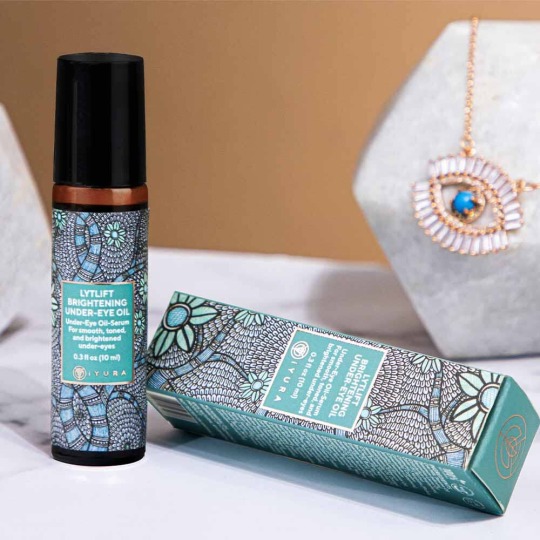
INTRODUCING: LYTLIFT BRIGHTENING UNDER-EYE OIL-SERUM
An 18-Herb Formulation Prepared Using a 5000-Year-Old Method of ‘Oil-Cooking’, Enriched with Eye-Opening ‘Eye-urvedic’ herbs!
Instantly brightens the under-eyes and gently allows brightness to resurface in that delicate area
Reduces the appearance of lines around the crow’s feet area
Softens, plumps, and de-texturizes the crepey crisscross look on the skin around the eyes
Soothes and counters the heat and tiredness in your eyes
Moisturizes dry, dull under-eyes with a unique ‘Balance-Intel’, disappearing formula that soaks right into the skin, leaving just the right amount of cooling moisture and neither oily residue nor dry, parched skin.
#ayurveda#pure herbs#artists on tumblr#ayurvedic medicine#ayurvedictreatment#ayurvedicmedicine#ayurvedic treatment#herbal#treatment#health#ayurvedic doctor in allahabad#ayurvedic doctor in ghaziabad#ayurvedic doctor in rajkot#dombivli#digital illustration#digital painting#drawing#painting#digital art#portrait#artwork#animation#kalyan#muslim#my art#mine#menswear#tumblr milestone#meme
42 notes
·
View notes
Text
VENUS AS A BOY

Tim Cury in "The Rocky Horror Picture Show", 1975
The body is the vessel through which we experience life and creation and so it has the power to tie us to earth as well as free us from it. The spirit and the body have been treated as separate concepts, but this isn’t necessarily true for female bodies.
“To deny the relevance of our gendered body in spiritual life is part of a worldview that sees the physical and spiritual as separate, and the physical as an illusory shadow of something much more real. For those women who instinctively understand the utter holiness of what our bodies are capable of, this separation – and diminishment – makes no sense.” –Hilary Hart in the “Body of Wisdom”.
For female bodies, "God" lies internally and within their very form. The female body can become a vessel for something holy and sacred, and so the search for God is projected internally. For male bodies, God lies "beyond" and doesn’t materialize within the structures of the body. As their form is not a vessel for creation in the same way the female one is, the search for God is projected externally. This could explain the creation of temples, churches, religion as a whole, and adoration for religious / spiritual figures.
In general though, God is said to reside in the body through the Shukra Dhatu. Our bodies are composed of 7 layers, known as the 7 Dhatus in Ayurveda. Each Dhatu is developed or transformed out of the previous one so that the final Dhatu contains the essence of all the previous 6.

© Dr. Vasant Lad
The final Dhatu is said to be the most significant out of the 7 as it can be felt throughout our bodies and minds and contains the “essence” (Jing in Chinese medicine) of one’s entire being. The 7th Dhatu is the Shukra Dhatu. The Shukra Dhatu is the reproductive tissue and the embodiment of creation, or God. In female bodies, Shukra manifests as the ova and menstrual blood. In male bodies, Shukra manifests as semen. Semen is thus the most precious bodily fluid in the male body and the foundation of their entire physical and spiritual being. The ancient Chinese also believed that semen contained the ‘essence’ of the male body and was thus revered as a sacred life-source (quite literally). For this reason, sex had the power to drain the body of its vitality. The male body in particular is considered the "victim" (or giver) of this exchange while the female one the "predator" (the taker).
Jing (meaning essence or vitality) is found in semen but not stored directly in it. Jing is actually stored in the Kidneys, which are responsible for sexual maturity, reproduction, and the growth of the body. Excessive loss of Jing impacts physical, psychical, and spiritual maturation. The Kidneys are also responsible for the “Fire of the gate of Life” (Ming Men). In this sense, one’s essence is inextricably linked to one’s internal fire, life-force, and vitality as all fall under the domain of one organ.
“Since ancient times in China excessive sexual activity has been considered a cause of disease because it tends to deplete the Kidney-Essence…Excessive sexual activity is more often a cause of disease in men than in women.” – Giovanni Maciocia in “The Foundations of Chinese Medicine.”
Kidney health is specifically important to spiritual life as they are the "root of life" and the foundation of Yin and Yang in the entire body. Also, the Essence literally fills the spinal cord and brain and provides the nervous system with enough strength to sustain transcendental experiences during or outside of meditation.
“Ejaculation is a more direct loss of Kidney-Essence than orgasm is for women as obviously there is no loss of menstrual blood or ova during orgasm in women.”
To preserve one's Shukra (and so Jing) means to detach from the pleasures of the body and the earth, which the female body is an embodiment of. This detachment is rigidly practiced by practitioners of brahmacārya, yogis, and priests, who are almost always male and known for being celibate.

Richey Edwards & Nicky Wire portrait by Kevin Cummins, 1991
“This practice is primarily recommended for men, because a woman’s body will experience a monthly downward flow of energy connected to her menstrual cycle. This cycle must be highly honoured. For a woman, the practices of a naisthika brahmacārya would contradict her body’s natural flow of energy.” -Dr. Shankaranarayana Jois in “The Sacred Tradition of Yoga.”
In the female body, Shukra is released monthly as a purification ritual. Unlike male bodies which blossom when they conserve their Shukra Dhatu, female ones naturally give up their Shukra as it craves its release. For this reason, spiritual practices are said to be different for men and for women, or for male bodies and female ones.
For men, mastery and immense control over the body are encouraged if they wish to transcend it. Control over the senses is important because the Shukra Dhatu has the power to anchor men to the physical world through the desire it generates in the body. Male bodies that are easily ‘seduced’ into offering their Shukra Dhatu lack inner stability. Male promiscuity is actually not ‘masculine’ and reveals a lack of discipline, control, spiritual maturity, and of Yang. We see this more commonly or stereotypically unfold with promiscuous and heterosexual cis men who are unconsciously under the control of the people they are so attracted to. However, they often believe the opposite is true. They lack sexual discipline and indiscriminately give their “essence” to the people they have sex with.

The female body is naturally receptive to this and can benefit significantly from this exchange.
“Prostaglandins are found in the semen of a wide range of animals from insects to mammals, suggesting that for a wide range of females, having lots of sex with multiple partners is actually good for them. It could explain why the females of those promiscuous species have an increased lifetime fecundity compared to those that don’t.” –Lucy Cooke in ‘Bitch: A Revolutionary Guide to Sex, Evolution and the Female Animal.’
These physical benefits extend to the psychical and energetic bodies so that the receiver becomes energized, revitalized, and stronger as they have consumed the male's vitality and life-force. Partners inevitably reap the physical, psychical, and spiritual blessings or curses of the other during sex and vice versa. Celibacy is encouraged (at times for a non-renunciate) to either avoid welcoming another’s unhealthy Shukra or rotten essence into the body or to persevere one's own and nourish it.
With queer men, the energetic and physical exchange is different and perhaps more balanced in the sense that both parties ‘lose’ and give up their Shukra Dhatu to receive each other’s. With queer women, the energetic and physical exchange is inevitably different as well. Sapphic women don’t take in each other’s or a male’s Shukra Dhatu. They are purified through monthly bleeding (both of their own and their partner). They are considered ‘energetic virgins’ and deeply sacred. For instance, in ancient Incan civilizations, the king's future wife was selected from a group of women who lived in a sacred temple. These girls/women had only come in contact with other women (sexually too) and so were fit to be with the king because of their purity, meaning they had never consumed another person's Jing.

For male bodies, the careless wastage of the Shukra Dhatu leads to more weakness in soul, body, and psyche. On a physical level, this manifests as the loss of critical bioactive compounds found in sperm.
“Each ejaculate contains millions of sperm along with a cocktail of critical bioactive compounds, the inevitable expense of which racks up the overall biological bill such that in mammals, for sure, we now know that the combined energetics of a single ejaculate is in fact greater than that of an egg. As such, semen production is generally limited and ‘sperm depletion’ a genuine concern, with most males needing time to replenish their stocks after a big spend. In humans, for example, complete recovery can take as long as 156 days.” –Lucy Cooke in ‘Bitch: A Revolutionary Guide to Sex, Evolution and the Female Animal.’
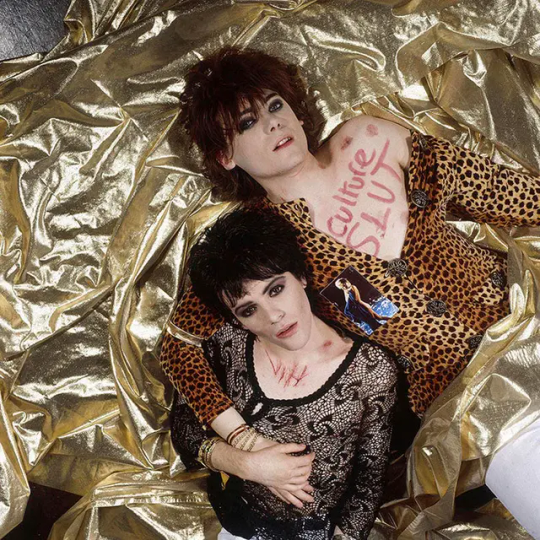
Richey Edwards & Nicky Wire portrait by Kevin Cummins, 1991
On a psychical level, the wastage of Shukra manifests as a loss of confidence, impotence, an inferiority complex, and a higher receptivity to others. That is, the wastage of the Shukra Dhatu creates weakness in the Anamaya Kosha (physical body), the Pranamaya Kosha (energetic body), and Manomayakosha (the mental and emotional body). The Koshas are the subtle bodies and the Shukra Dhatu provides core strength to the first Kosha, the Anamaya Kosha, which is the base for the rest of them. Chinese medicine explains this in terms of the water element in the body (manifested as Kidneys) which provides the foundation for the other elements (and organs).
Male bodies that honour, preserve, and nurture their Shukra Dhatu are said to glow and radiate immense light as they have preserved their “essence” and know when to offer it and to whom. Shukra actually means clearness, light, and purity in Sanskrit, while the right Chinese character for Jing (靖) means clear or refined.
Venus, who is the celestial embodiment of Shukra, is exalted in Pisces. Within the realm of Pisces, Venus is exalted in Revati nakshatra whose deity is Pūsan which means to nourish and increase. In this way, to be beautiful means to be deeply nourished. One who nourishes their Shukra is extremely attractive to others as they unconsciously crave to absorb this light or fire and be nourished too.
Aside from beauty, nourishment can also lead to transcendence as mentioned earlier. The body and the mind, both of which highly influence each other, need to be pure and clear in order for their inhabitants to leave them. Pisces, the 12th house, and Revati are the final “states” of their respective systems and will always come to represent transcendence, the end of the material experience, death of the body, illumination, the ultimate escape, etc. Perhaps less intuitively, the 12th house also represents the cycles of Saṃsāra and the transportation of the spirit into a different body, a different mind, a different 1st house, and into yet another incarnation. Thus, Venus (sensorial pleasure) can tie men to the material world as well as free them from it. This is just as true for the Shukra Dhatu. Just as Shukra gives us life on a literal and spiritual sense, its destruction can also lead to death and further “entrapment”.
“He believes in a beauty he's Venus as a boy he believes in a beauty and gentle.” –Björk


#Vedic astrology#shukra#shukra dhatu#ayurveda#tropical astrology#astrology thoughts#astrology observations#venus#masculinity#divine masculinity
39 notes
·
View notes
Text
I checked last year's Question papers of my seniors and Yes I should definitely study.
Specially Sanhita and Padaarth 😭
#study#studyblr#study struggles#studystudystudy#Ihatethesesubjects#Ayurveda#bams#doctors#will this ever end#Pass the exam#exam#Terms
10 notes
·
View notes
Text

137 notes
·
View notes
Text
Ayurvedic Secrets to Radiant Skin: Understanding Your Dosha and Simple Homemade Skincare
In the pursuit of healthy, glowing skin, many of us seek solutions in expensive creams, serums, and treatments. But what if the key to vibrant skin lies in ancient wisdom that's been practiced for centuries?
Welcome to the world of Ayurveda, where the holistic approach to skincare goes beyond topical treatments to address the root causes of skin imbalances.
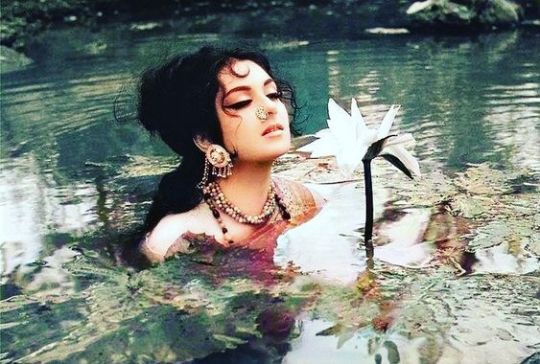

What is Ayurveda?
Ayurveda, often called the "science of life," is an ancient healing system that originated in India thousands of years ago. At its core is the belief that our well-being is intricately connected to the balance of three fundamental energies known as doshas: Vata, Pitta, and Kapha.
Understanding Your Dosha:
Each person is born with a unique combination of these doshas, which influence not only our physical characteristics but also our mental and emotional tendencies. By identifying your dominant dosha, you can tailor your skincare routine to address specific skin concerns effectively.
Vata Dosha: If you have Vata-dominant skin, you may notice tendencies toward dryness, flakiness, and sensitivity. Vata skin often feels parched and is prone to premature aging. To nurture Vata skin, focus on moisturizing and nourishing practices.
Skincare Routine: Massage your skin with warm sesame oil to deeply moisturize and improve circulation. Use gentle, hydrating cleansers and rich, emollient creams to lock in moisture.
Homemade Recipe: Create a hydrating face mask by mixing mashed avocado with honey and a few drops of almond oil. Leave it on for 15 minutes before rinsing with warm water.
Pitta Dosha: Pitta-dominant skin tends to be sensitive, prone to redness, inflammation, and occasional breakouts. Excessive heat and stress can exacerbate Pitta imbalances, leading to increased oiliness and irritation.
Skincare Routine: Opt for cooling and soothing ingredients like cucumber, aloe vera, and sandalwood. Use gentle, non-abrasive cleansers and avoid harsh exfoliants that can aggravate inflammation.
Homemade Recipe: Make a calming face pack by mixing sandalwood powder with rose water and a pinch of turmeric. Apply it to clean skin, leave it on for 15 minutes, then rinse with cool water.
Kapha Dosha: Kapha-dominant skin tends to be oily, prone to congestion, and enlarged pores. Kapha imbalances can result in dullness, blackheads, and a lack of vitality.
Skincare Routine: Focus on purifying and detoxifying practices to balance excess oil and congestion. Use gentle, oil-balancing cleansers and lightweight, non-comedogenic moisturizers.
Homemade Recipe: Create an invigorating scrub by mixing ground oats with yogurt and a pinch of turmeric. Gently massage it onto damp skin in circular motions, then rinse with lukewarm water.
General Ayurvedic Skincare Tips: In addition to dosha-specific practices, there are some general principles of Ayurvedic skincare that benefit all skin types:
Practice Abhyanga, or self-massage with warm oil, to promote relaxation and improve circulation.
Drink herbal teas like chamomile or tulsi to reduce internal inflammation and support overall well-being.
Maintain a balanced lifestyle with adequate sleep, regular exercise, and stress management to promote skin health from the inside out.
Ayurveda offers a holistic approach to skincare that emphasizes harmony between mind, body, and spirit. By understanding your dosha and incorporating simple, homemade remedies into your skincare routine, you can unlock the secrets to radiant and healthy skin naturally. Remember, consistency and mindfulness are key to achieving lasting results. So, embrace the wisdom of Ayurveda and let your inner glow shine through!
Feel free to reach out if you have any questions or need further guidance on your Ayurvedic skincare journey.
#astrology#ayurveda#skincare#spirituality#vedicastrology#hinduism#homemade#lotus#lakshmi#goddess#beauty
43 notes
·
View notes
Text
The mind is very sensitive. It is the very organ of sensitivity underlying all the senses. Everything affects or colors the mind. Everything that we see or feel leaves some imprint or residue upon it. Hence the mind must be treated with care, particularly in children. The mind can be easily hurt, in which case it places barriers around itself and dulls its sensitivity. The mind is easily affected and disturbed, excited, depressed or distracted.
- Dr. David Frawley, Ayurveda and the Mind
13 notes
·
View notes
Text
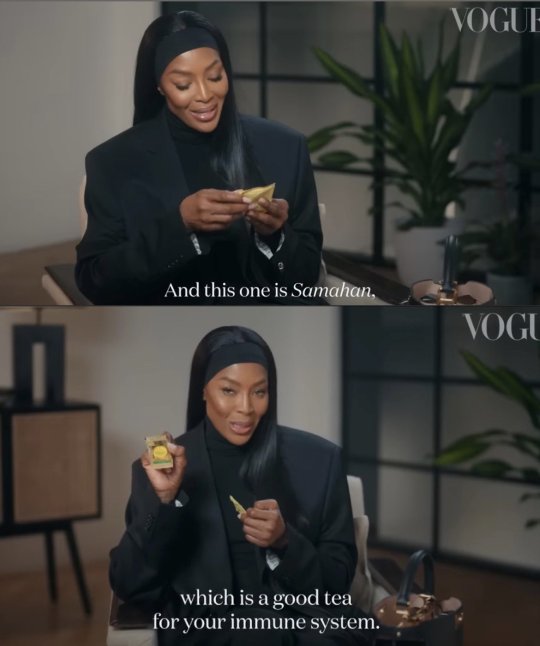
YOU'RE KIDDING.
Naomi Campbell Sri Lankan Mum ISO 9000 Certified. She just like us fr 🥹
#rest of Asians – you know how your Mums go for the Tiger balm for everything from coughs to cancer? yeah that#naomi campbell#link samahan#sri lanka#desi tag#just south asian things#just desi things#herbal remedies#ayurveda#culture#sri lankan culture#desi aunty#sri lankan#funny#laugh tag#knee of huss
48 notes
·
View notes
Text
CHIKU KHANE SE HOTE HAI BHOT FAYDE #viral #like #follow #trending #benefits
7 notes
·
View notes
Text
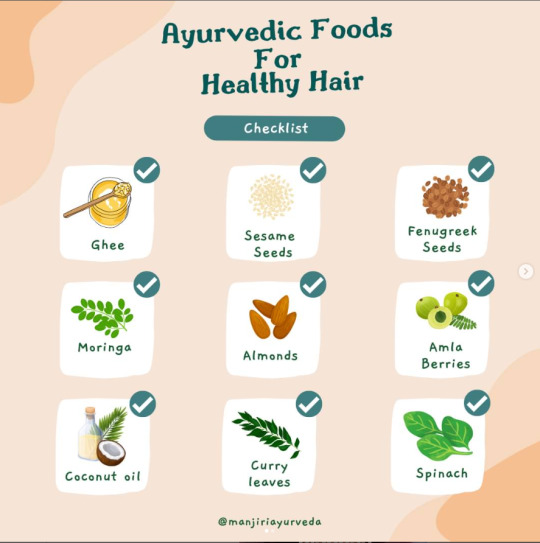
9 Ayurvedic foods for Healthy Hair
✅ Ghee- Ghee is excellent for your hair. It is rich in vitamins A, D, and E, which are vital for healthy hair, bones and skin. It balances both Pitta and Vata while nourishing Kapha keeping your hair strong, shiny and prevents early greying.
✅ Sesame seeds - Sesame seeds and oil are both best for Vata balance, Sesame seeds are rich in calcium and can help with hair growth as well as strengthening of the hair.
✅ Fenugreek seeds - Fenugreek seeds which are popular for balancing blood sugar, also promote hair growth and prevent hair loss. The protein, phytochemicals present in fenugreek seeds help to nourish the hair follicles, improve scalp circulation, and promote healthy hair growth. These also help counter hormonal hair loss.
✅ Moringa- Moringa is packed with vitamins, minerals and antioxidants that can protect your hair follicles from damage, balance the hormones and slow the effects of aging, including hair-greying.
✅ Almonds -. Almonds give you a boost of good protein and calcium that work as blocks for building hair, vit E, omega -3 fatty acids and biotin. Eat 4-6 almonds soaked in water overnight after removing the peels as a hair tonic.
✅ Amla berries - Amla is a Rasayana that supports your entire body head to toe, and has an amazing effect on your hair. It improves the texture of hair, helps get rid of split ends, nourishes hair follicles and also prevents premature greying.
✅ Coconut oil - Coconut oil is a natural saturated fat and helps calm scale irritation, flaking and itching. The fats help seal in hair moisture and the phytonutrients support hair growth and prevent dryness and brittleness of hair.
✅ Curry leaves- Curry leaves contain vitamin C, vitamin B, proteins, and antioxidants, all of which contribute to cellular regeneration and promote healthy circulation to the blood vessels in the scalp.
✅ Spinach - Spinach is a healthy green vegetable that's loaded with beneficial nutrients like folate, iron, and vitamins A and C, all of which are important for hair growth
Which of these is your favourite?
#ayurveda canada#gut health#ayurveda#holistic food#healthy lifestyle#holistichealth#holistic health#holistic healing#digestion#healthyfood#hair care#hairtreatment#hair growth
29 notes
·
View notes